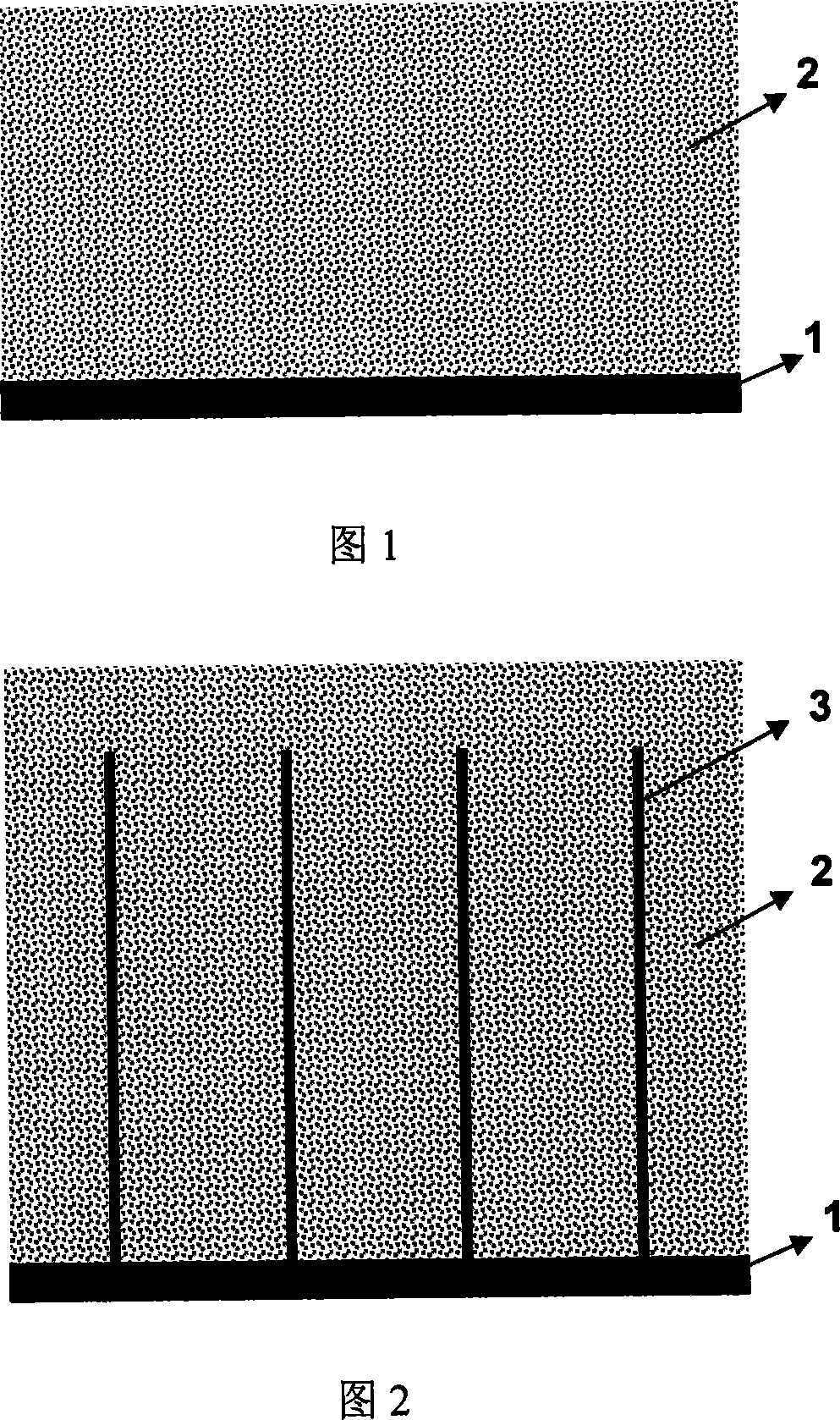A work electrode of dye sensitization solar battery
A technology for solar cells and working electrodes, applied in the field of dye-sensitized solar cells, can solve the problems of decreased electron transport capacity, short diffusion distance, and limit the efficiency of dye-sensitized solar cells, etc., so as to improve the collection and transport efficiency, improve the Short-circuit current and efficiency, the effect of high design feasibility
- Summary
- Abstract
- Description
- Claims
- Application Information
AI Technical Summary
Problems solved by technology
Method used
Image
Examples
Embodiment 1
[0019] Embodiment 1: As shown in Figure 2, the described dye-sensitized solar cell working electrode includes a conductive substrate 1 and a working electrode 2, and a conductive microchannel 3 is provided inside the working electrode 2, and one end of the conductive microchannel 3 is attached On the conductive substrate 1 , the other end goes deep into the working electrode 2 and is tightly surrounded by the working electrode material. The conductive microchannels 3 are isolated from each other, and the distance between them is on the order of the diffusion depth of electrons in the working electrode, usually 50nm-50mm, and forms an ordered or disordered array structure. The shape of the conductive microchannel 3 is nanometer and / or micrometer wire, the material is semiconductor, the diameter is 3nm, and the length is 500nm.
Embodiment 2
[0020] Embodiment 2: The basic structure of dye-sensitized solar cell working electrode is as embodiment 1, wherein the shape of conductive microchannel 3 is nanometer and / or microtube, also can be nanometer and / or micrometer needle, nanometer and / or micrometer needle Ribbons, nano and / or micro cones, nano and / or micro helices.
Embodiment 3
[0021] Example 3: The basic structure of the working electrode of the dye-sensitized solar cell is as in Example 1, wherein the material of the conductive microchannel 3 is metal, or a conductive polymer.
PUM
| Property | Measurement | Unit |
|---|---|---|
| diameter | aaaaa | aaaaa |
| length | aaaaa | aaaaa |
| length | aaaaa | aaaaa |
Abstract
Description
Claims
Application Information
 Login to View More
Login to View More - R&D
- Intellectual Property
- Life Sciences
- Materials
- Tech Scout
- Unparalleled Data Quality
- Higher Quality Content
- 60% Fewer Hallucinations
Browse by: Latest US Patents, China's latest patents, Technical Efficacy Thesaurus, Application Domain, Technology Topic, Popular Technical Reports.
© 2025 PatSnap. All rights reserved.Legal|Privacy policy|Modern Slavery Act Transparency Statement|Sitemap|About US| Contact US: help@patsnap.com

